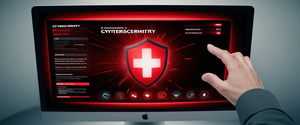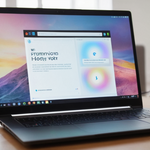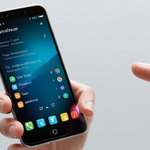
The question of whether Mac computers require antivirus software represents one of the most persistently debated topics in digital security, particularly as the computing landscape continues to evolve. Historically, Apple’s macOS has maintained a reputation as a relatively secure operating system with built-in protections that many users believed rendered third-party antivirus software unnecessary. However, this conventional wisdom has become increasingly complicated by recent developments in the threat landscape, shifting user behaviors, and the growing adoption of Mac devices in both enterprise and consumer environments. The evidence presented in contemporary security research, threat intelligence reports, and independent testing indicates that while macOS does provide a robust baseline of security protections, the necessity for additional antivirus software depends significantly on individual usage patterns, organizational requirements, and the specific threat model applicable to each user’s situation. This comprehensive analysis examines the multifaceted dimensions of Mac security, evaluates the effectiveness of built-in protections, assesses current threat trends, and provides evidence-based guidance for different user categories.
The Historical Context and Evolution of Mac Security Perception
For decades, macOS users have operated under the assumption that their systems were inherently more secure than Windows-based computers, with many believing their machines were essentially immune to viruses and malware. This perception emerged from several legitimate factors, including the relative rarity of Mac-targeted malware during the early internet era, the Unix-based architecture underlying macOS, and Apple’s consistent emphasis on security features throughout its marketing and product development. The belief was so widespread that it became embedded in Mac culture, with many long-time users dismissing the need for third-party security software as unnecessary overhead that could compromise system performance.
However, this historical perception does not reflect current reality. The security research community has documented a dramatic shift in attacker priorities over the past five to seven years. A shocking 2021 study revealed a 1,000 percent increase in Mac-targeted malicious programs compared to previous years. More recently, security researchers have observed that macOS threats increased by 400 percent from 2023 to 2024, driven largely by stealer malware families such as Atomic, Poseidon, Banshee, and Cuckoo stealers. In 2025, the situation has intensified further, with reports indicating a 73 percent increase in Mac malware incidents compared to the previous year. These dramatic increases reflect a fundamental shift in the threat landscape, wherein cybercriminals have recognized that the combination of Mac’s growing market share, the false sense of security among users, and the potential for lucrative data theft has made macOS an increasingly attractive target.
The terminology used to describe threats on Mac systems also reflects an important distinction. Technically speaking, modern threats targeting macOS are properly classified as malware rather than viruses. A virus represents only one category of malicious software that self-replicates by modifying other programs. Malware is a broader category encompassing viruses, worms, trojans, ransomware, spyware, adware, keyloggers, rootkits, and other malicious programs. Macs cannot technically be infected with traditional viruses in the Windows sense, but they are vulnerable to various categories of malware that can be introduced through security vulnerabilities or social engineering attacks such as phishing and vishing. This distinction is important for understanding the actual nature of threats facing Mac users and the types of protection mechanisms that are most relevant.
macOS Built-in Security Architecture and Protective Mechanisms
Apple has invested substantially in developing multiple layers of defensive mechanisms that operate continuously within macOS to identify and block malware before it can cause harm. The company structures its malware defenses using a three-layer approach that addresses different stages of the attack lifecycle. The first layer is designed to prevent the launch or execution of malware entirely, employing the App Store together with Gatekeeper combined with Notarization. The second layer seeks to block malware from running on customer systems through the combined action of Gatekeeper, Notarization, and XProtect. The final third layer acts to remediate malware that has managed to successfully execute on a system.
XProtect represents Apple’s primary built-in antivirus technology, functioning as a signature-based detection and malware removal tool that has been included in macOS since 2009. XProtect operates continuously in the background without interrupting user activities and employs YARA signatures, a sophisticated tool used for signature-based malware detection, which Apple updates regularly. Apple monitors for new malware infections and strains independently from system updates, pushing signature updates automatically to ensure that Macs are protected against emerging threats. When a user first launches an application, when an application has been modified in the file system, or when XProtect signatures are updated, the system automatically checks the application against its malware signature database. If XProtect detects known malware, it immediately blocks execution of the file and moves it to the Trash while alerting the user through the Finder interface.
The growth and development of XProtect’s detection capabilities has been substantial. Between May 2019 and August 2025, XProtect’s Yara rules increased fourfold from 92 rules to 372 rules, and the file size grew over twentyfold from approximately 43 kilobytes to nearly 970 kilobytes. This dramatic expansion reflects Apple’s ongoing efforts to keep XProtect current with emerging threats, though it also demonstrates that the company is continuously discovering and cataloging new malware variants.
Gatekeeper represents Apple’s software code-signing and verification mechanism designed to ensure that only trusted software can be executed on a Mac. When software that has not been digitally approved by Apple attempts to run, Gatekeeper blocks it until the user provides explicit authorization. In macOS Catalina (version 10.15) and later, Gatekeeper checks for malware every time an application is run. The technology is particularly effective when used in conjunction with Developer ID certificates and Apple’s Notarization service.
Notarization functions as Apple’s malware scanning service for applications distributed outside the Mac App Store. Developers who wish to distribute their applications through channels other than the App Store must submit their software to Apple for scanning as part of the distribution process. Apple scans this software for known malware, and if none is discovered, issues a Notarization ticket that developers typically staple to their applications. Importantly, Apple can and does issue revocation tickets for applications known to be malicious, even if they have been previously notarized. macOS regularly checks for new revocation tickets so that Gatekeeper has the latest information and can block launch of malicious files. This process operates more rapidly than XProtect signature updates, with revocation tickets being distributed through CloudKit synchronization multiple times per day, making Notarization revocation particularly effective at quickly blocking known malicious applications.
System Integrity Protection (SIP) represents a critical security mechanism that restricts the actions even of users with root-level access on critical parts of macOS. SIP prevents unauthorized access to system files and kernel extensions, substantially reducing the likelihood of system tampering or attacks targeting core components. This feature has been a fundamental part of macOS security since its introduction and significantly limits the potential damage that malware can inflict on core system operations.
FileVault encryption, powered by Apple’s FIPS-validated cryptographic modules, ensures compliance with high-assurance United States federal standards through the use of AES-XTS data encryption. FileVault protects full volumes on internal and removable storage devices, meaning that even if a Mac is physically compromised, the encrypted data remains protected from unauthorized access.
App Sandbox provides yet another layer of protection by isolating applications from accessing certain system resources or data without explicit user permission. By running applications in a restricted environment, the App Sandbox limits the damage that malware or malicious applications can cause.
Despite these multiple layers of protection, a critical reality remains: macOS built-in security features are not sufficient to provide complete protection against the contemporary threat landscape. Apple’s built-in defenses provide an excellent first layer of protection, but they are designed to protect against known threats. Macs can still be compromised through zero-day vulnerabilities, novel malware families that have not yet been cataloged in signature databases, and especially through social engineering attacks that convince users to bypass built-in security measures.
The Contemporary Threat Landscape Targeting macOS
The modern threat landscape for macOS differs substantially from that of just five years ago. Rather than being relatively ignored by cybercriminals, macOS has become an active focus of sophisticated threat actors ranging from nation-state-aligned groups to organized cybercrime syndicates to opportunistic malware-as-a-service operators.
Infostealer malware has emerged as the dominant threat category targeting macOS in 2024 and 2025. Infostealers topped the charts at 28.36 percent of detected Mac malware in 2024, followed closely by adware at 28.13 percent, with trojans at 16.61 percent and potentially unwanted programs at 15.06 percent. These infostealers are specifically designed to quietly gather sensitive data including cryptocurrency wallet information, passwords stored in browsers and system keychains, browser cookies, and files stored on disk. The surge in stealer malware represents a significant shift in threat actor priorities, as these tools provide direct financial benefit through data exfiltration rather than through the more traditional mechanisms of file encryption or system disruption.
In 2024, macOS experienced unprecedented volumes of stealer malware activity, with specific families such as Atomic, Poseidon, Banshee, and Cuckoo stealers achieving widespread distribution. The typical infection vector involved users downloading what appeared to be legitimate software or cracked software through disk image (DMG) files. Once mounted, users encountered dialog boxes instructing them to right-click on the downloaded software and select “Open,” instructions that deliberately guided users to bypass Gatekeeper protections designed to prevent execution of unsigned code. Importantly, 95 percent of stealer infections occurred before September 2024 and only 5 percent after, a dramatic drop explained by Apple’s release of macOS Sequoia in September 2024, which removed the ability to bypass Gatekeeper through the right-click method.
Backdoor malware has also seen significant activity on macOS, particularly during targeted campaigns. Backdoors create hidden entry points into systems, allowing attackers to gain remote access and control over infected devices. The impact of backdoors can be severe, as they often remain undetected for extended periods, giving cybercriminals ample time to exfiltrate data or launch secondary attacks. Backdoor threats employ various tactics to evade detection, including hiding in system processes, using encrypted communication channels, and employing polymorphic code that changes its signature to avoid antivirus detection.
Social engineering remains the primary vector through which users are compromised on macOS systems. Over 90 percent of cyber attacks originate from phishing. Threat actors pose as familiar organizations such as Netflix, Outlook, DHL, AT&T, and Amazon to target users, understanding that most users maintain accounts with these legitimate services. The effectiveness of these social engineering attacks is amplified by the persistent belief among Mac users that their systems cannot be compromised, making them more susceptible to clicking malicious links or entering credentials on fake login pages.
Ransomware on macOS, while not as sophisticated or successful as Windows variants, continues to pose risks to Mac users. Various ransomware families including CryptoLocker, Locky, and more recent variants have targeted Mac systems, with attackers demanding payment in cryptocurrency to restore access to encrypted files.
Browser hijackers and adware remain persistent threats that, while often less dangerous than stealers or ransomware, degrade system performance and user experience. These malware types forcibly change browser settings, redirect users to fake search engines or malicious pages, bombard users with irrelevant advertisements, and can slow system performance significantly.
Gatekeeper bypasses represent an evolving threat vector, with attackers developing sophisticated techniques to circumvent Apple’s code-signing and notarization protections. While Apple has worked to patch known bypass techniques, researchers continue to identify new weaknesses in the Gatekeeper implementation. Particularly concerning have been vulnerabilities involving crafted ZIP archives and the inconsistent propagation of the quarantine attribute across various third-party utilities.
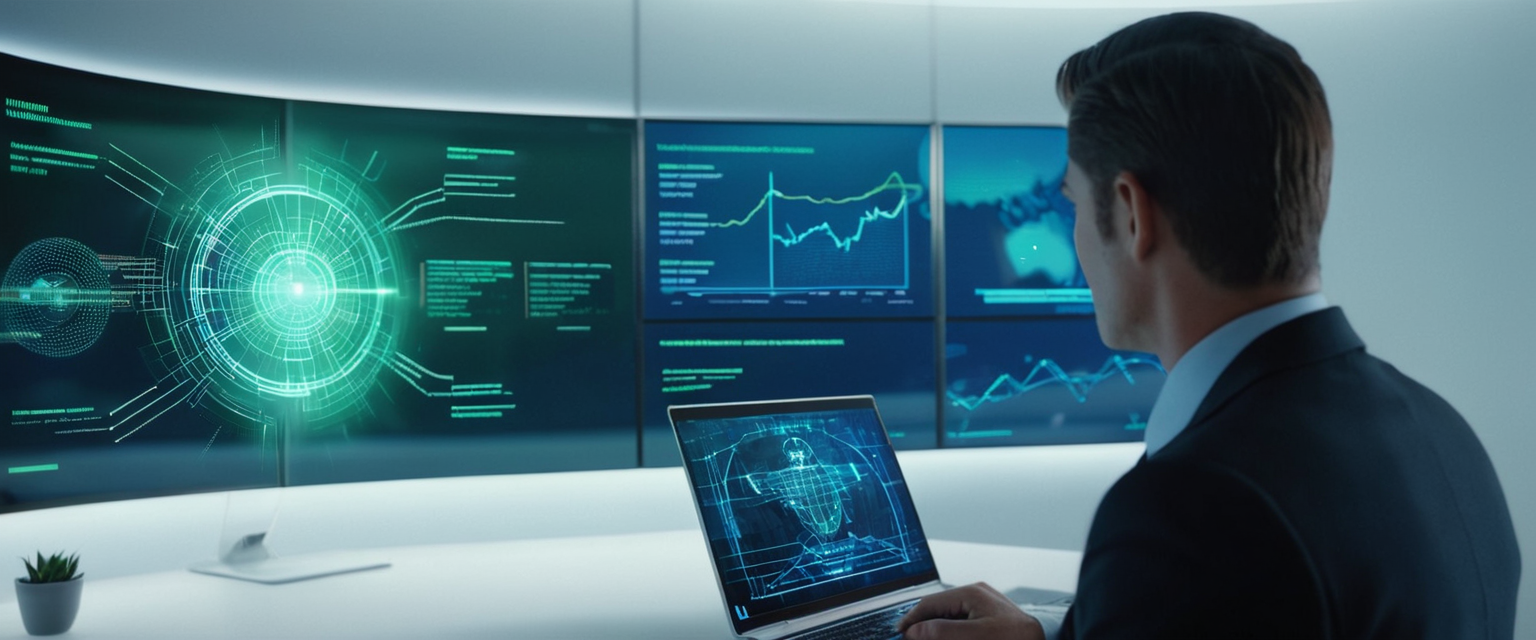
Risk Profile Analysis: Understanding Your Personal Security Requirements
The necessity for third-party antivirus software on a Mac is not a binary decision applicable equally to all users. Instead, the requirement depends substantially on individual usage patterns, risk tolerance, and the specific threat model applicable to each person’s circumstances. Security experts typically categorize users into distinct risk profiles that help determine appropriate security measures.
Low-risk users represent individuals who engage in relatively cautious online behavior and who maintain good security hygiene. These users browse primarily reputable websites, avoid downloading files from unfamiliar sources, do not visit torrent sites or engage in file-sharing activities, keep their software updated, and exercise caution when opening email attachments or clicking links. For these users, the built-in security features of macOS, when properly maintained and kept updated, may provide adequate protection. These users benefit primarily from following preventive practices: enabling automatic software updates, maintaining strong unique passwords, enabling two-factor authentication, and practicing careful judgment regarding which applications they install and from where those applications are sourced.
High-risk users represent individuals whose online activities expose them to elevated threat levels. This category includes users who frequently download files from diverse sources, particularly files from outside the Mac App Store; users who engage with online banking and financial transactions; users who work with sensitive or confidential information; users who visit unfamiliar or potentially compromised websites; users who participate in cryptocurrency exchanges or maintain cryptocurrency wallets; users who work for organizations that have experienced security breaches; and users who manage substantial amounts of personal or financial data. For these users, the additional layer of protection provided by dedicated third-party antivirus software becomes substantially more justified, as the probability of encountering threats exceeds that of the general population, and the consequences of compromise may be more severe.
Enterprise and organizational users occupy a special category within this risk framework. Organizations managing Mac fleets face unique security challenges that extend beyond individual user practices. Enterprise threat actors deliberately target organizational systems knowing that successful breaches can yield access to sensitive corporate data, intellectual property, customer information, and financial systems. Additionally, enterprise users may operate in regulated industries with specific compliance requirements that mandate particular security controls. For these environments, deploying endpoint detection and response (EDR) solutions, mobile device management (MDM) platforms, and comprehensive security monitoring represents essential practice rather than optional enhancement.
Understanding one’s position within this risk continuum is essential for making informed decisions about security investments. A user who primarily uses their Mac for word processing, email, and web browsing with careful attention to suspicious links may reasonably conclude that macOS built-in protections are sufficient. Conversely, a user who manages cryptocurrency holdings, conducts sensitive financial transactions, or handles confidential business information would be well-advised to implement additional security measures.
Performance and System Impact of Third-Party Antivirus Software
One frequently cited concern among Mac users regarding third-party antivirus software relates to its potential negative impact on system performance. This concern is not entirely without merit, though the magnitude of performance degradation varies considerably depending on the specific antivirus solution implemented.
According to data from AV-Test, antivirus software can affect computer speed with slowdowns ranging from as little as one percent to as much as 51 percent, depending on the particular software and system configuration. However, more recent antivirus solutions designed specifically for macOS tend to achieve relatively light performance impacts. For example, Surfshark, identified as one of the lightest-weight antivirus solutions tested, demonstrated minimal performance degradation, never slowing down the test computer even when actively running a full scan.
Importantly, some members of the Mac user community have reported that third-party antivirus software can cause performance issues, security issues, and make macOS appear buggy, suggesting that such software is worse than having no protection at all. This perspective, while expressed by respected community members, may reflect experiences with older or poorly optimized antivirus solutions rather than representing a universal characteristic of contemporary security software.
The decision regarding whether the performance cost of running antivirus software is worth the security benefit represents a personal calculation that depends on the specific user’s priorities. For users primarily concerned with maximum system performance and willing to accept additional risk in exchange for speed, disabling antivirus may represent a rational choice. For users whose primary concern involves data security, the modest performance cost may be more than justified by the enhanced protection.
Third-Party Antivirus Solutions and Evaluation Criteria
For users who determine that additional antivirus protection beyond macOS built-in defenses is warranted, numerous third-party solutions are available. These solutions vary substantially in their features, performance impacts, price points, and effectiveness.
Free antivirus options available for Mac include Avast Free Antivirus, Malwarebytes Free, and Comodo Free Antivirus for Mac. Free solutions typically offer basic malware detection and removal capabilities but often lack more advanced features such as real-time protection, scheduled scanning, and comprehensive threat coverage. Malwarebytes Free, for instance, lacks real-time protection, instead providing on-demand scanning through its Browser Guard feature. In testing, Malwarebytes Free successfully blocked 10 out of 10 malicious URLs but showed 0 percent success rate in blocking malware downloads. However, testing showed that Malwarebytes in full scan mode detected 97 out of 150 planted malware samples, providing moderate but not comprehensive protection.
Paid antivirus solutions for Mac include options such as Bitdefender Antivirus for Mac, Norton 360 Deluxe, Kaspersky Premium, ESET Security Ultimate, Avast Security, Intego Mac Security, and F-Secure Total. These solutions typically offer more comprehensive protection, including real-time monitoring, scheduled scanning, firewall capabilities, web filtering, and additional features such as password management and parental controls.
Recent independent testing by AV-TEST in June 2025 evaluated nine home user security products for macOS Sequoia. All nine products tested—including Avast Security 16.1, AVG Antivirus 20.7, Avira Security 2.3, Bitdefender Antivirus for Mac 10.2, ESET Security Ultimate 8.2, F-Secure Total 25.5, Kaspersky Premium 26.0, Norton Norton 360 25.5, and Protected.net TotalAV 5.10—achieved perfect scores in protection (100 points). Most also achieved perfect scores in performance, with only ESET Security Ultimate achieving 91.7 in performance and F-Secure Total achieving 75 in performance. All achieved perfect scores in usability.
When evaluating third-party antivirus solutions for Mac, several key criteria warrant consideration: real-time protection capabilities, including continuous monitoring of file system activities; detection accuracy, encompassing both known malware and zero-day exploits through behavioral analysis; performance impact during both normal operation and active scanning; ease of use and configuration options; integration with Mac’s native security features; and the vendor’s track record in responsively addressing emerging threats.
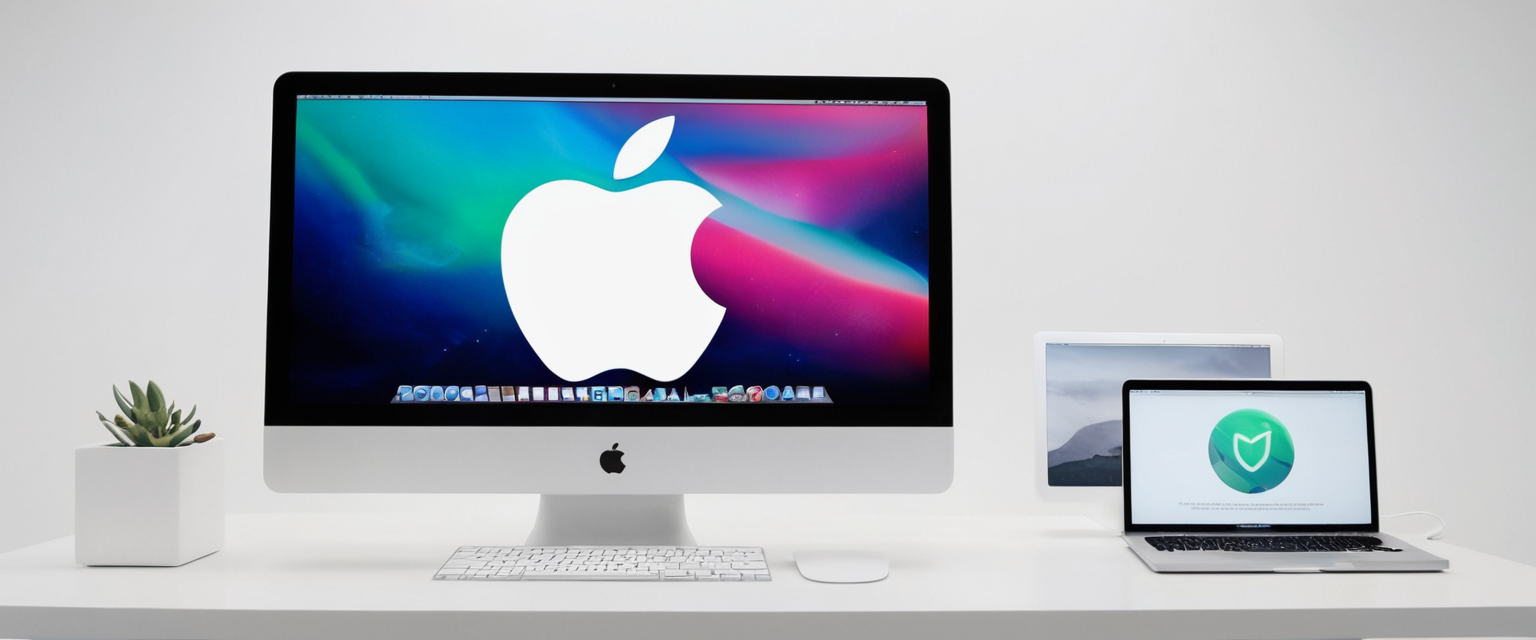
Conflicting Expert Opinions on Mac Antivirus Necessity
The security community exhibits genuine disagreement regarding the necessity of third-party antivirus software for Mac users, creating the confusing landscape that many users observe. This disagreement reflects legitimate differences in perspective regarding risk tolerance, user behavior patterns, and the relative weight assigned to different security considerations.
Representatives of Apple Communities, including highly respected long-time contributors such as Jack-19 and John Galt, consistently recommend against installing third-party antivirus software. These experts argue that Mac computers do not need any sort of antivirus software or cleaning software, that such software can cause performance issues, security issues, and make macOS appear buggy, and that the macOS built-in malware protection is far superior to third-party solutions. They emphasize that Apple has already implemented comprehensive security mechanisms and suggest that third-party vendors are simply attempting to create demand for unnecessary products through fear marketing.
Security vendors including McAfee, Comparitech, and others consistently recommend that Mac users install third-party antivirus software, characterizing such protection as essential. These companies emphasize the rising threat landscape, the increasing sophistication of Mac-targeted malware, and the documented gaps in coverage provided by XProtect alone. Security vendors note that XProtect is not as up-to-date as some alternative solutions and that gaps in XProtect’s library of malicious codes can leave users exposed.
Independent security researchers exhibit more nuanced positions that tend toward context-dependent recommendations. Researchers at Red Canary, Jamf Threat Labs, Sentinel Labs, and Moonlock Labs emphasize that while macOS provides solid baseline protections, the threat landscape has changed so dramatically that relying solely on built-in protections is increasingly unjustified. These researchers note that many contemporary attacks rely on social engineering to bypass built-in protections, that users frequently override macOS security features, and that sophisticated threat actors possess the resources to identify and exploit gaps in macOS defenses.
Apple’s official stance, as communicated through official documentation, acknowledges both that macOS includes built-in protections and that third-party solutions may provide value for additional security. Apple documentation describes the security features built into macOS but does not explicitly recommend against third-party security software, instead leaving the decision to individual users based on their specific requirements.
This diversity of expert opinion reflects the genuinely complex nature of the question. The debate is not simply between security experts with different competencies, but rather between different value systems regarding risk tolerance, performance prioritization, and user autonomy. Apple Community members prioritize system simplicity and performance, assuming users will practice reasonable security hygiene and questioning whether additional software actually improves security versus merely creating a sense of false confidence. Security vendors prioritize comprehensive protection against documented threats, regardless of performance costs. Independent researchers seek to balance these considerations while acknowledging both the genuine improvements in macOS security and the real evolution of the threat landscape.
Enterprise and Organizational Implications
The question of Mac antivirus necessity takes on different dimensions in enterprise environments compared to consumer contexts. Organizations deploying Mac devices face explicit liability for data breaches, regulatory compliance requirements in many industries, and responsibility for protecting sensitive customer and employee information.
For enterprise environments, deploying comprehensive endpoint protection beyond macOS built-in defenses represents essential practice. This deployment includes mobile device management platforms to enforce security configurations across the device fleet; endpoint detection and response solutions to actively monitor for and investigate suspicious activities; integration with security information and event management systems for comprehensive logging and threat intelligence; and implementation of zero-trust security architectures that verify every access request rather than assuming internal network traffic is inherently trustworthy.
Enterprise deployment of security solutions is typically achieved through MDM integration, which eliminates many of the user experience concerns that plague individual user adoption of security software. Rather than requiring individual users to manually install security tools and respond to security prompts, MDM deployment automatically pushes security configurations and security software to managed endpoints, providing appropriate entitlements and permissions transparently to users while maintaining comprehensive security.
According to Jamf security research, infostealers, adware, trojans, and potentially unwanted programs represent the dominant threat categories targeting Mac devices in enterprise environments. These threats demonstrate that sophisticated threat actors are actively and deliberately targeting macOS systems with the same intensity as Windows systems, an important evolution from the historical perception that Macs were overlooked by cybercriminals. Organizations with Mac device fleets must acknowledge this evolution and adjust security postures accordingly.
Recent Developments and Future Considerations
The macOS security landscape continues to evolve at a rapid pace. Apple’s release of macOS Sequoia in September 2024 and macOS Tahoe in late 2025 introduced substantial security improvements that merit consideration in evaluating current security requirements.
macOS Sequoia addressed a critical weakness in Gatekeeper that had been exploited extensively by stealer malware families. The ability to bypass Gatekeeper by right-clicking unsigned software and selecting “Open” had been actively exploited by threat actors for distribution of malware throughout 2024. Apple’s removal of this bypass mechanism in Sequoia resulted in a dramatic 95 percent reduction in stealer malware infections in the final months of 2024, with only 5 percent of the year’s stealer detections occurring after September. However, threat actors quickly adapted, beginning to distribute malware disguised as shell scripts in disk images and instructing users to drag these scripts onto Terminal icons to execute them.
macOS Tahoe, released in October 2025, introduces optimization of XProtect scanning processes. Most significantly, macOS Tahoe skips XProtect malware scans for notarized applications on first run, as applications that pass notarization have already been scanned by Apple and do not require redundant rescanning. This optimization addresses a performance concern that had affected app launch times in recent macOS versions and represents a practical balancing of security effectiveness with user experience.
Apple’s XProtect continues to grow increasingly comprehensive. Between June 2024 and August 2025, Apple added numerous large detection rules to XProtect, though the average rule size has subsequently declined as newer rules have become more focused. This ongoing expansion of XProtect coverage suggests that Apple recognizes the necessity of continuously updating its built-in malware detection capabilities to address emerging threats.

Recommendations for Different User Categories
Based on the comprehensive analysis of current threat landscape, macOS security capabilities, expert opinions, and user risk profiles, the following recommendations emerge for different categories of Mac users.
Casual users with low risk profiles who primarily use their Macs for word processing, email, web browsing, and entertainment, who maintain strong security hygiene including not clicking suspicious links and not downloading files from unfamiliar sources, and who keep their systems updated should reasonably conclude that macOS built-in security features provide adequate protection. These users should prioritize keeping their systems updated, using strong unique passwords, enabling two-factor authentication where available, and maintaining reasonable caution regarding what they download and install. Installation of third-party antivirus software represents an optional enhancement rather than a necessity for this group.
Active internet users with moderate risk profiles who download files from diverse sources, engage in online shopping and banking, maintain important financial and personal information on their Macs, or frequently encounter new applications should seriously consider implementing additional security protections. These users benefit from the additional layer of protection provided by reputable third-party antivirus solutions, particularly those with real-time monitoring capabilities. The relatively modest performance impact of contemporary antivirus solutions and the increased likelihood that these users will encounter novel threats justify the additional security investment.
High-risk users including those who manage cryptocurrency holdings, handle sensitive business information, work in financial services or healthcare, maintain access to valuable digital assets, or have been targeted by threat actors in the past should implement comprehensive security measures including third-party antivirus software with real-time protection, regular security audits, and consideration of additional specialized security tools appropriate to their specific threat models. These users should also implement advanced security practices including network segmentation, encrypted communications, secure password management, and regular backups.
Organizations and enterprises must recognize that macOS devices are directly targeted by sophisticated threat actors and implement comprehensive security architectures that include endpoint detection and response solutions, mobile device management integration, security monitoring and logging, and enforcement of security configurations across device fleets. Organizations should not rely on built-in macOS security features alone but instead implement layered defenses appropriate to the sensitivity of information accessed by Mac devices and the organization’s specific regulatory and compliance requirements.
Users subject to mandatory antivirus requirements from employers or other authorities who have determined that organizational security policies require third-party antivirus software should understand that such requirements, while potentially adding some performance overhead, do provide additional detection capabilities beyond macOS built-in features. Users in this situation should select antivirus solutions that are specifically optimized for macOS and that integrate well with macOS native security features, and should ensure that such software is installed through legitimate channels and kept updated.
Mac Security: Separating Myth from Necessity
The question of whether Mac computers need antivirus software does not admit a simple universal answer applicable to all users. Instead, the necessity for third-party antivirus protection depends on multiple factors including individual usage patterns, risk tolerance, specific threat models, organizational requirements, and the value placed on different security versus performance tradeoffs.
The macOS built-in security architecture has become substantially more sophisticated through Apple’s investments in XProtect, Gatekeeper, Notarization, System Integrity Protection, FileVault, and App Sandbox. These mechanisms provide meaningful protections against known malware and represent genuine security enhancements compared to systems lacking such integrated protections. XProtect has expanded fourfold in detection rule coverage over the past six years and continues to receive regular signature updates. For users engaging in cautious, low-risk online behavior with good security hygiene, these built-in protections can provide adequate security when supported by operating system updates and user behavior changes.
However, the threat landscape has fundamentally changed in ways that render historical assumptions about Mac security increasingly questionable. MacOS has transitioned from a platform relatively ignored by cybercriminals to an active focus for sophisticated threat actors, with a 1,000 percent increase in Mac-targeted malware between 2019 and 2021, a 400 percent increase from 2023 to 2024, and a 73 percent increase from 2024 to 2025. Threat actors are deliberately developing Mac-specific malware, employing sophisticated social engineering techniques, and actively researching Gatekeeper and other macOS security mechanisms to identify bypass opportunities. This evolution reflects a genuine change in the threat model facing Mac users, not merely marketing efforts by security vendors.
XProtect and Gatekeeper, while effective against known threats, cannot provide complete protection against novel malware, zero-day exploits, and sophisticated social engineering attacks. These built-in mechanisms are designed to protect against known malware signatures and to restrict the execution of obviously suspicious code, but they cannot identify previously unknown threats or prevent users who have been successfully deceived by social engineering attacks from voluntarily bypassing security protections. The effectiveness of macOS security depends partly on user behavior, and many contemporary attacks succeed through convincing users to override built-in protections rather than through exploiting technical vulnerabilities.
The impact of third-party antivirus software on system performance has become substantially less severe than historical concerns suggested. Contemporary antivirus solutions designed for macOS generally impose modest performance impacts ranging from negligible to modest, with testing showing that many solutions achieve near-perfect scores in both protection and performance categories. The performance cost of antivirus protection has therefore become less prohibitive as a reason for rejecting such protection.
Risk profile remains the most important factor in determining appropriate security measures. Low-risk users with careful security practices may reasonably rely on macOS built-in protections, while high-risk users with exposure to diverse threats should implement additional protections. Organizations and enterprises should recognize that they face fundamentally different threat models than individual consumers and should deploy security architectures commensurate with the sensitivity of information at risk and their specific regulatory requirements.
The available evidence supports a nuanced middle position that acknowledges both the genuine improvements in macOS security and the real evolution of the threat landscape. The default assumption that Macs do not require antivirus protection is no longer justified in 2025, but neither is a universal recommendation that all Mac users must install third-party antivirus software appropriate for every individual user context. Instead, users should assess their personal risk profiles, evaluate their usage patterns and exposure to threats, and make informed decisions about security investments appropriate to their specific circumstances. For many users—particularly those who engage in active internet use, handle sensitive information, or work for organizations with specific security requirements—the additional protection provided by reputable third-party antivirus software is justified. For others with very low-risk profiles, macOS built-in protections supplemented by good security hygiene may remain sufficient. The key principle should be informed decision-making based on personal threat assessment rather than outdated assumptions about Mac invulnerability or reflexive dismissal of all security concerns.
Protect Your Digital Life with Activate Security
Get 14 powerful security tools in one comprehensive suite. VPN, antivirus, password manager, dark web monitoring, and more.
Get Protected Now
